IBM WebSphere Application Server Express for iSeries (WAS Express) is a tightly integrated development tool and application server. As an alternative to the full-blown WebSphere Application Server (WAS), it provides an easily affordable, single-machine entry point for SMBs to create dynamic Web sites.
The WAS Express product package includes the Rational Web Developer tool, which is a full integrated development environment (IDE). Rational Web Developer is an enhanced version of the WebSphere Studio Site Developer, which is available with WAS V5. With the delivery of WAS V6, there is now greater consistency across the family of products. This means that WAS Express V6 offers significantly more functionality than WAS Express V5.1 offered.
WAS Express V6 offers a quick and affordable solution to develop, deploy, and manage Web-based applications. WebSphere Rapid Deployment simplifies development and deployment of applications, allowing you to install with only one CD per platform, use a single launch for runtime and tools, and run samples and tutorials for easy movement to production.
V6 also allows migration to other IBM WebSphere products when you require more advanced development and deployment capabilities. It addresses the needs of medium-sized companies, departments within larger organizations, and Independent Software Vendors (ISVs) and the consultants and integrators that serve them.
Finally, it provides the Enterprise Generation Language to let you build Java applications without having to know Java or OO concepts. ISVs have ported support for more than 400 applications.
WAS Express V6 has incorporated full support for the Java 2 Enterprise Edition (J2EE) 1.4 specification, including Enterprise JavaBeans (EJBs) and Web Services. This makes it easier to develop and deploy applications using industry-standard tools. It also makes it easier to integrate applications inside the enterprise as well as externally with your customers by allowing you to do the following:
- Enable more-demanding business applications by leveraging software development kit (SDK) 1.4.2
- Connect to multiple back-end data sources through a standard interface with Service Data Objects (SDO)
- Build dynamic Web user interfaces with drag-and-drop development using standards-based JavaServer Faces (JSF)
- Provide fine-grained application update capability, which allows the ability to introduce small delta-changes to installed applications as well as the ability to add, update, or remove parts of the installed application and restart the changed part
In addition, WAS Express V6 has a more simplified installation process:
- Simplified operating system setup and prerequisites
- Updated launchpad application for easier planning and installation startup
- Improved documentation, including step-by-step installation diagrams
- Revamped Administrative Console look and feel (see Figures 1 and 2)
Figure 1: Check out the new WebSphere Administrative Console! (Click images to enlarge.)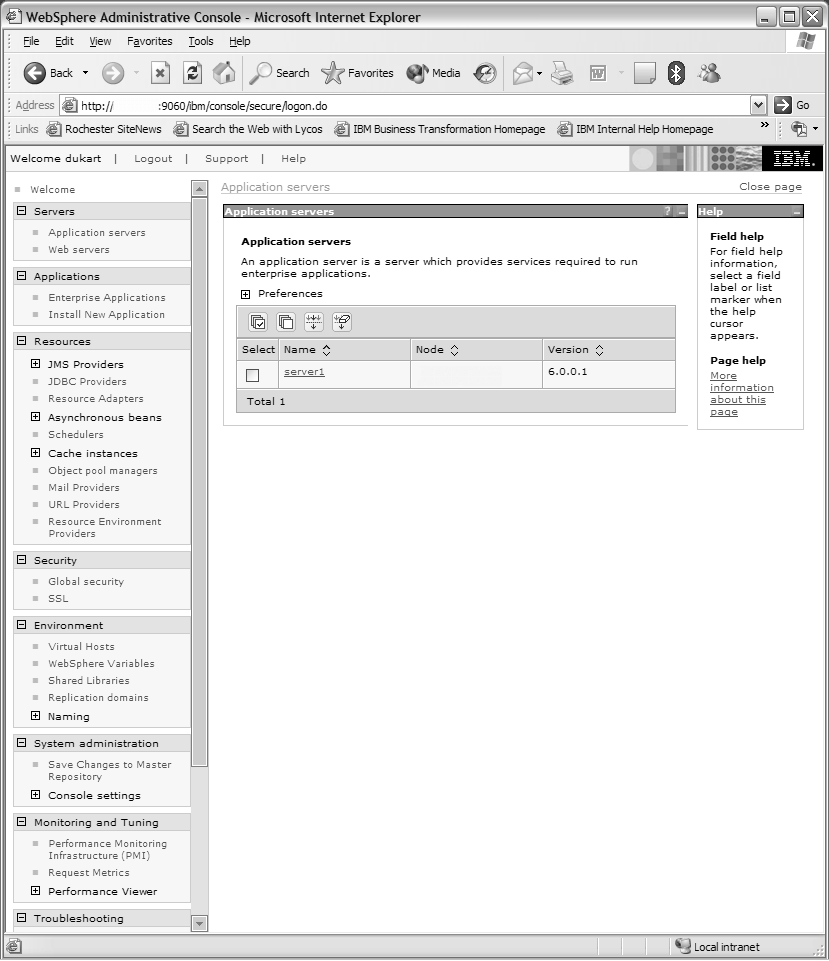
Figure 2: Here's another view of the new WebSphere Administrative Console.
- A combined product ID (5733W60) that contains all three WAS editions--Express, Base, and Network Deployment
- Separated installation routines for the Application Server product, the Web server, the Web server plug-ins, and the clients, which allows for a smaller footprint (install only what you need)
- Unlimited processors on iSeries for WAS Express
- Separated core product binary data from the customized data that is created as you define your application server runtime environment, allowing for one installation or copy of the core files (binary files) on a machine. You can have multiple sets of customized runtime environments known as "profiles."
- Shared files across installations on the same machine, allowing utilization of less disk space and simplification of product updates
- Shared product install root for both the Express and Base versions, allow only one version to be installed at a time on a machine (if Express is installed, Base can be installed as an upgrade)
- Simplified removal and reinstallation
- Enhanced EAR support--Using Rational Web Developer, you can define virtual host aliases, Java Authentication and Authorization Service, data sources, resource adapters, and other entities that are associated with your enterprise application for easier installation to WebSphere since the server configuration will be embedded in your application.
- Improved installation logging and status indicators (see example in Figure 3)
Figure 3: WAS Express V6 also offers an updated log file.
WAS Express V6 provides the capability to create configurations to be able to deploy many server configurations more quickly. These configurations are created in a WebSphere Configuration Archive, which contains the same information as a regular WebSphere configuration but with two main differences: It allows a subset of a full configuration, and it specifies configuration information as virtualized for portability by removing any specific information, like the host name. It also allows imports and exports of configurations and provides simple creation of many servers with the same configuration.
WAS Express V6 Extensions
WAS Express V6 has added extensions that were originally only a part of the more-expensive Base edition. These programming model extensions are IBM-developed extensions to the J2EE platform. These core extensions are now available in all versions:
- Last Participant Support extends the transaction service to allow a single one-phase resource to participate in a two-phase transaction with one or more two-phase resources.
- Internationalization Service addresses the challenges posed by locale and time zone mismatch without the limitations of conventional techniques. It does this by systematically managing the distribution of internationalization contexts across the various components of EJB applications, including client applications, Enterprise JavaBeans, and servlets.
- WorkArea Service work areas provide efficient sharing of information across a distributed application. For example, you might want to add profile information as each customer enters your application. By placing this information in a work area, it is available throughout your application, eliminating the need to hand-code a solution or to read and write information to a database.
- ActivitySession Service attaches automatically with an HttpSession, so it can be used to extend access to the ActivitySession over multiple HTTP invocations and over inclusion or forwarding of servlets. It also supports EJB activation periods that can be determined by the lifecycle of the Web HTTP client. The ActivitySession context stored in an HttpSession can be used to relate work for the ActivitySession back to a specific Web HTTP client.
- Extended Java Transaction API (JTA) support provides additional APIs to the UserTransaction interface that is defined in the JTA as part of the J2EE specification. Specifically, the API extensions do two things: First, they provide access to global and local transaction identifiers (TIDs) associated with the thread. The global ID is based on the TID in CosTransactions::PropagationContext:, and the local ID identifies the transaction uniquely within the local Java Virtual Machine (JVM). Second, they enable transaction synchronization callback that allows any J2EE component to register an interest in transaction completion. This can be used by advanced applications to flush updates before transaction completion and to clear up state after transaction completion. J2EE (and related) specifications position this function generally as the domain of the J2EE containers.
- Startup Beans load when an application starts. Startup Beans enable J2EE applications to run business logic automatically, whenever an application starts or stops normally. Startup beans are especially useful when used with asynchronous Bean features. For example, a startup Bean might create an alarm object that uses the Java Message Service (JMS) to periodically publish heartbeat messages on a well-known topic. This enables clients or other server applications to determine whether the application is available.
- Asynchronous Beans (WorkManager) execute asynchronously by a J2EE application, using the J2EE context of the asynchronous Bean creator. Asynchronous Beans that are Java objects or EJBs can improve performance by enabling a J2EE program to decompose operations into parallel tasks. Asynchronous Beans support the construction of stateful, active J2EE applications. These applications address a segment of the application space that J2EE has not previously addressed--that is, advanced applications that require application threading, active agents within a server application, or distributed monitoring capabilities (see Figure 4).
Figure 4: The WebSphere Administrative Console enables work managers.
- Scheduler Service executes business logic using persistent and transactional timer services. Each scheduler runs tasks independently and has a programming interface accessible from J2EE applications using the Java Naming and Directory Interface (JNDI). You can also manage a scheduler using a Java Management Extensions (JMX) Bean. See the scheduler documentation in the WAS V6 Information Center for details on how to configure and use a scheduler (see Figure 5).
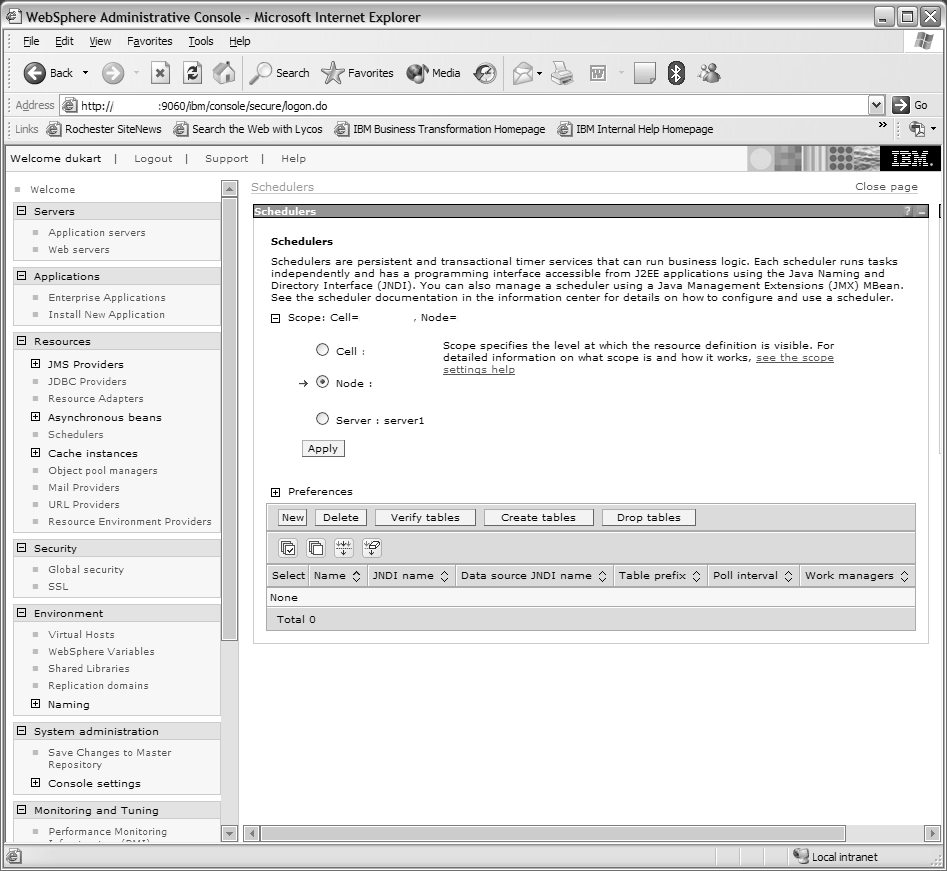
Figure 5: The WebSphere Administrative Console allows you to utilize the scheduler service.
- Object Pools manage a pool of arbitrary objects and help applications avoid creating new Java objects repeatedly. Most objects can be created once, used, and then reused. An object pool supports the pooling of objects waiting to be reused. These object pools are not meant to be used for pooling Java Database Connectivity (JDBC) connections or Java Message Service (JMS) connections and sessions. WAS V6 provides specialized mechanisms for dealing with those types of objects. These object pools are intended for pooling application-defined objects or basic Developer Kit types (see Figure 6).
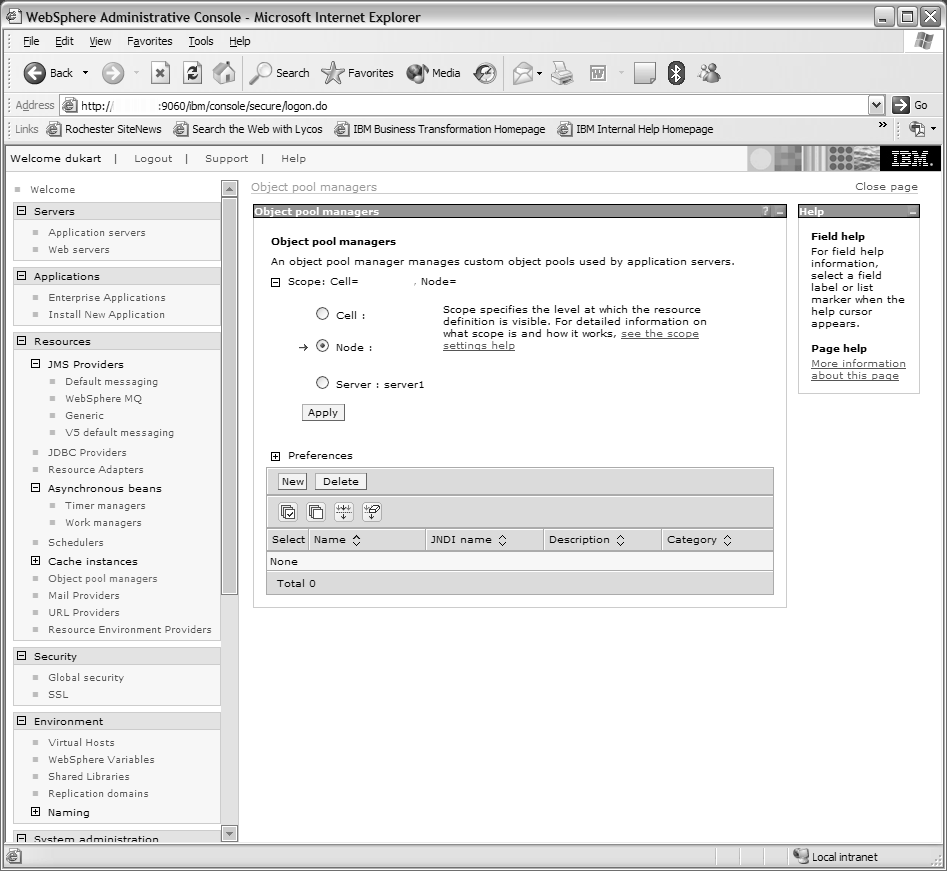
Figure 6: With the WebSphere Administrative Console, you can manage pooling of objects.
- Web Services Gateway Filter Programming Model (with migration support) allows you to configure specific endpoint listeners and deploy gateway and proxy services to those listeners. The Web Services gateway helps manage the relationships between externally provided Web Services and those provided by the service integration bus (that is, the relationships between inbound and outbound services and their WSDL definitions). This includes the management of multiple target services for a single gateway service and support for proxy services. You create Web Services gateway instances in order to partition the total set of gateway and proxy services and endpoint listeners into logical groups to allow simpler management.
- DistributedObjectCache provides a location, in addition to the default shared dynamic cache, where J2EE applications can store, distribute, and share data. This gives applications greater flexibility and provides better tuning of the cache resources. Use the DistributedObjectCache API to access this cache instance.
- Application Profiling enables you to identify particular units of work to the WAS runtime environment. The runtime can tailor its support to the exact requirements of that unit of work. Access intent is currently the only runtime component that uses the application profiling functionality. For example, you can configure one transaction to load an entity Bean with strong update locks and configure another transaction to load the same entity Bean without locks.
Additional WebSphere Express Products
WAS Express V6 isn't the only Express product you should know about. All Express products are designed to provide an affordable entry point for SMBs.
WebSphere Commerce Express
WebSphere Commerce Express provides a complete SMB e-commerce solution. Commerce Express V5.6 offers a simpler and more streamlined store design, easier to use business tools, a fast new "lite" development environment, and new B2B features. Here are some highlights:
- Enables quick and easily installation, allowing you to begin creating and customizing your site in as little as one hour
- Provides "all-in-one" licensing that gives you everything you need for production, staging, and site development
- Is ready to go with the capabilities you need to get started out-of-the-box, while supplying many advanced features you can grow into
- Allows easy administration, with tools that let mid-market customers manage their sites effectively without special technical skills
- Builds on open standards, freeing your company from proprietary platform restrictions
WebSphere Portal Express
WebSphere Portal Express offers SMBs portal software that is easy to deploy and use. With only a few clicks of the mouse, you can customize a page layout, add new portlets and users, and completely change the portal's look and feel. For SMBs interested in leveraging collaborative tools within a portal, WebSphere Portal Express also includes instant messaging, online "people awareness" and chat, virtual team rooms, group calendaring, and task management. Consider these advantages:
- Discover personalized and collaborative access to information, applications, and people
- Improve employee productivity by providing users with a unified desktop of applications organized to match their work patterns
- Improve service to your users by filtering applications and content so that it is most relevant for each user
- Provide a more user-friendly interface on legacy applications by surfacing them through a customizable portal framework
WebSphere MQ Express
WebSphere MQ Express delivers application-to-application connectivity, providing both a simple solution to midmarket connectivity requirements as well as a foundation on which to build and develop integration solutions. MQ Express makes business information work:
- Connects nearly everything to almost anything--simply, reliably, and affordably
- Frees your core IT skills to focus on new business initiatives instead of having them tied up with complex in-house coding
- Removes need for applications to be concerned with where business information is stored within your organization
- Combines all the power and capability of the industry's leading application connectivity middleware with a low investment for an affordable, low-risk entry to e-business
- Minimizes the time it takes to get started by being quick and easy to install
- Is simple to use
- Provides context-sensitive tutorials
WebSphere Business Integration Connect Express
WebSphere Business Integration Connect Express provides a lightweight, easy-to-use, cost-effective B2B connectivity tool, leveraging AS2 and HTTP standards for transmitting documents securely over the Internet. It differs from the Advanced and Enterprise editions by providing a community integration participant solution (versus a gateway hub solution for a community owner or manager) AS2 certification from Drummond Group. It enables the following:
- Connection to trading partners
- Management of document exchange process
- Storage and transmission of any document format: XML (OAG, proprietary, etc.), EDI, text files, binary, etc.
- External integration options: HTTP/HTTP(S) integration, industry-standard AS2 packaging
Act Now!
WAS Express V6 is a cost-effective and simple solution to aid you in developing and deploying Web-based applications. Owners of eServer i5 models running i5/OS can order WAS Express V6 at no charge through the new Web Enablement for i5/OS Offering. If you are one of these customers and you currently have a WAS 5.0 or 5.1 Express license with an active Passport Advantage maintenance contract, your upgrade to WAS Express V6 is free.
If you are considering using WAS Express V6, a simple step-by-step book can quickly get you started: IBM WebSphere Application Server - Express: Step-By-Step.
Authors' Notes: This article includes excerpts from various IBM Web sites. The authors collected the information from these Web sites and organized it in an easy-to-follow format. For more details on WAS, refer to IBM.
Sue Schmidt is an Advisory Software Engineer on the IBM Customer Test team located at the Rochester, Minnesota, laboratory. She has over nine years of experience in the software testing field. Her areas of expertise include WebSphere and Java. Sue can be reached at
Marilyn Dukart is an Advisory Software Engineer on the IBM Customer Test team located at the Rochester, Minnesota, laboratory. She has over 17 years of experience in the software testing field. Her areas of expertise include Lotus Domino and WebSphere. Marilyn can be reached at


















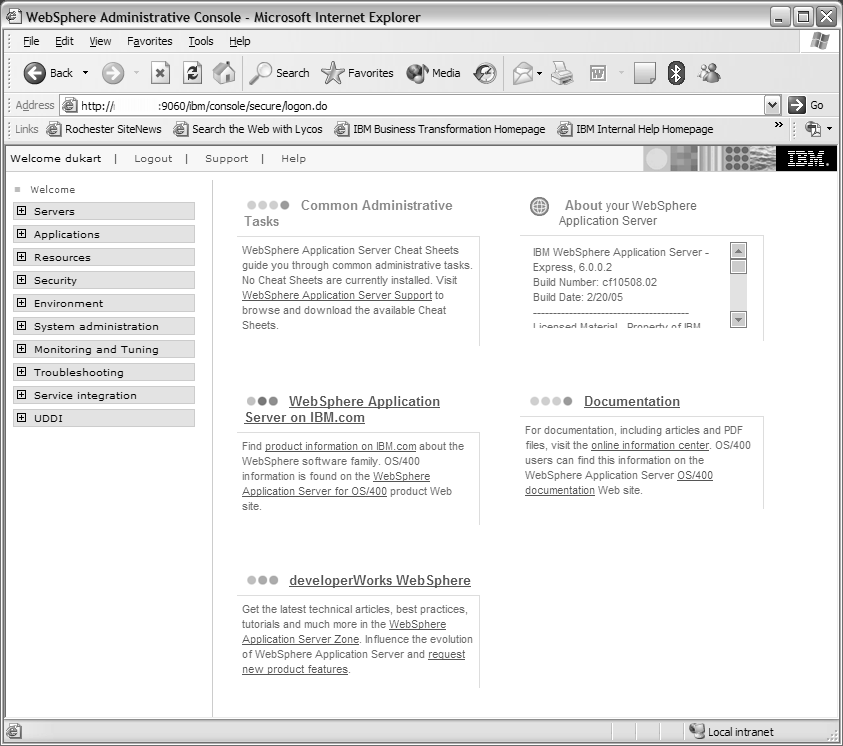
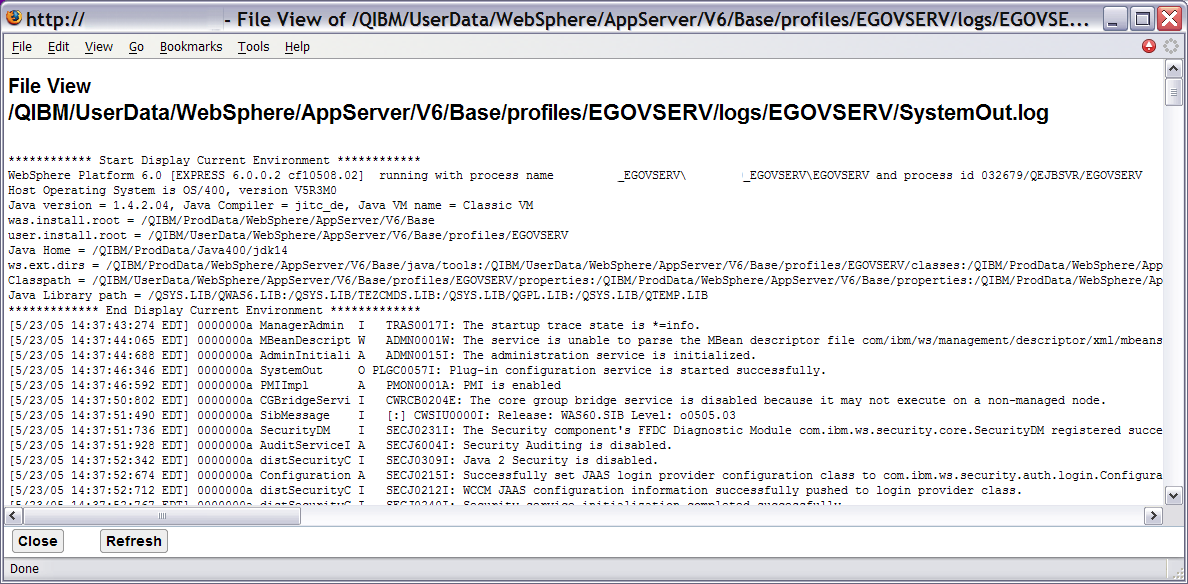
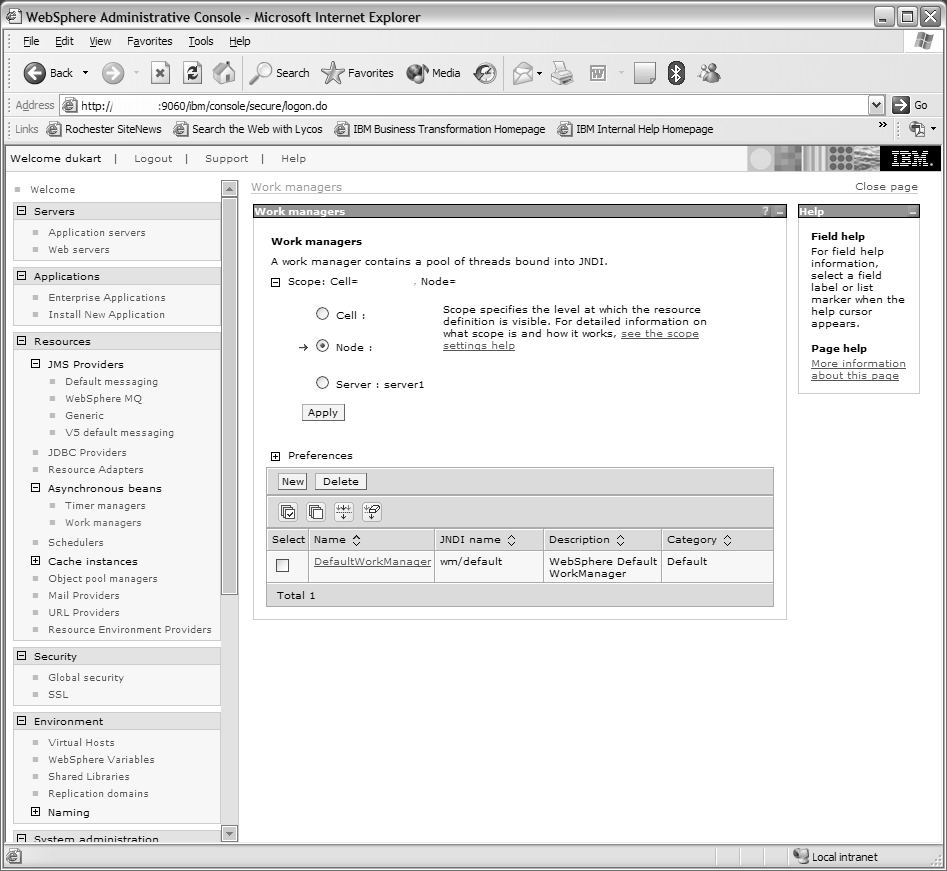


 More than ever, there is a demand for IT to deliver innovation. Your IBM i has been an essential part of your business operations for years. However, your organization may struggle to maintain the current system and implement new projects. The thousands of customers we've worked with and surveyed state that expectations regarding the digital footprint and vision of the company are not aligned with the current IT environment.
More than ever, there is a demand for IT to deliver innovation. Your IBM i has been an essential part of your business operations for years. However, your organization may struggle to maintain the current system and implement new projects. The thousands of customers we've worked with and surveyed state that expectations regarding the digital footprint and vision of the company are not aligned with the current IT environment. TRY the one package that solves all your document design and printing challenges on all your platforms. Produce bar code labels, electronic forms, ad hoc reports, and RFID tags – without programming! MarkMagic is the only document design and print solution that combines report writing, WYSIWYG label and forms design, and conditional printing in one integrated product. Make sure your data survives when catastrophe hits. Request your trial now! Request Now.
TRY the one package that solves all your document design and printing challenges on all your platforms. Produce bar code labels, electronic forms, ad hoc reports, and RFID tags – without programming! MarkMagic is the only document design and print solution that combines report writing, WYSIWYG label and forms design, and conditional printing in one integrated product. Make sure your data survives when catastrophe hits. Request your trial now! Request Now. Forms of ransomware has been around for over 30 years, and with more and more organizations suffering attacks each year, it continues to endure. What has made ransomware such a durable threat and what is the best way to combat it? In order to prevent ransomware, organizations must first understand how it works.
Forms of ransomware has been around for over 30 years, and with more and more organizations suffering attacks each year, it continues to endure. What has made ransomware such a durable threat and what is the best way to combat it? In order to prevent ransomware, organizations must first understand how it works. Disaster protection is vital to every business. Yet, it often consists of patched together procedures that are prone to error. From automatic backups to data encryption to media management, Robot automates the routine (yet often complex) tasks of iSeries backup and recovery, saving you time and money and making the process safer and more reliable. Automate your backups with the Robot Backup and Recovery Solution. Key features include:
Disaster protection is vital to every business. Yet, it often consists of patched together procedures that are prone to error. From automatic backups to data encryption to media management, Robot automates the routine (yet often complex) tasks of iSeries backup and recovery, saving you time and money and making the process safer and more reliable. Automate your backups with the Robot Backup and Recovery Solution. Key features include: Business users want new applications now. Market and regulatory pressures require faster application updates and delivery into production. Your IBM i developers may be approaching retirement, and you see no sure way to fill their positions with experienced developers. In addition, you may be caught between maintaining your existing applications and the uncertainty of moving to something new.
Business users want new applications now. Market and regulatory pressures require faster application updates and delivery into production. Your IBM i developers may be approaching retirement, and you see no sure way to fill their positions with experienced developers. In addition, you may be caught between maintaining your existing applications and the uncertainty of moving to something new. IT managers hoping to find new IBM i talent are discovering that the pool of experienced RPG programmers and operators or administrators with intimate knowledge of the operating system and the applications that run on it is small. This begs the question: How will you manage the platform that supports such a big part of your business? This guide offers strategies and software suggestions to help you plan IT staffing and resources and smooth the transition after your AS/400 talent retires. Read on to learn:
IT managers hoping to find new IBM i talent are discovering that the pool of experienced RPG programmers and operators or administrators with intimate knowledge of the operating system and the applications that run on it is small. This begs the question: How will you manage the platform that supports such a big part of your business? This guide offers strategies and software suggestions to help you plan IT staffing and resources and smooth the transition after your AS/400 talent retires. Read on to learn:
LATEST COMMENTS
MC Press Online